Sponsored
Charge not starting at specified time. Has anyone had this happen and know how to fix it?
Zprime29
Well-known member
- First Name
- Brandon
- Joined
- Jul 26, 2022
- Threads
- 42
- Messages
- 2,458
- Reaction score
- 2,597
- Location
- Tucson, AZ
- Vehicles
- 2022 Lightning ER, 2025 XC90 Recharge
My truck failed to charge while plugging in last night. Haven't had that happen in ages. No new updates popped up, haven't changed the charge times in over a year. No clue what happened, I didn't even notice until I got on the road this morning and was surprised I was only at 48%. Very annoying, I removed the charge window to make sure I charge tonight.
K6CCC
Well-known member
- First Name
- Jim
- Joined
- Sep 12, 2024
- Threads
- 22
- Messages
- 579
- Reaction score
- 534
- Location
- Glendora, Calif.
- Vehicles
- 2024 Lightning Flash ER in Antimatter Blue, 2017 Toyota Corolla (wife's car)
- Occupation
- Two Way radio systems
Check the clock to make sure it's right. The only time I had it fail to charge was because the clock was off by many hours - I am assuming due to an update.My truck failed to charge while plugging in last night.
P-38
Well-known member
This is why I don't let the truck schedule. The truck is set to always charge, the EVSE is set to TOU window and have not had an issue. As long as the truck is plugged in it is charged in the morning...

K6CCC
Well-known member
- First Name
- Jim
- Joined
- Sep 12, 2024
- Threads
- 22
- Messages
- 579
- Reaction score
- 534
- Location
- Glendora, Calif.
- Vehicles
- 2024 Lightning Flash ER in Antimatter Blue, 2017 Toyota Corolla (wife's car)
- Occupation
- Two Way radio systems
That makes the assumption that your EVSE has that capability. Not all do. I just checked and I could not find any way to set that on my FCSP.The truck is set to always charge, the EVSE is set to TOU window and have not had an issue.
Sponsored
Yup our FCSP is a dumb terminal, personally I have no time restriction and only maximum SOC set for 90% in the Sync Charging App.That makes the assumption that your EVSE has that capability. Not all do. I just checked and I could not find any way to set that on my FCSP.
Zprime29
Well-known member
- First Name
- Brandon
- Joined
- Jul 26, 2022
- Threads
- 42
- Messages
- 2,458
- Reaction score
- 2,597
- Location
- Tucson, AZ
- Vehicles
- 2022 Lightning ER, 2025 XC90 Recharge
Are you talking about the one in the top right corner of the screen? It's accurate, or at least it is right now. I *think* it was accurate the other day but I don't pay super close attention to it. It charged right away without issue (and with full A/C running an hour later due to the heat right now). I like to have it charge late at night/early morning as the garage is a bit cooler. I might nuke the location and redo the schedule just to make sure it's good.Check the clock to make sure it's right. The only time I had it fail to charge was because the clock was off by many hours - I am assuming due to an update.
Although I like being able to charge at 80A, I won't be sad if/when the FCSP dies and I replace it with something better. It's been averaging 48A when I look at kWh into the battery and time it took...the settings page still says 80A. *sigh*....guess I need to flip the breaker again to reboot.
In preparation for my quarterly balancing of the battery pack, where I'll charge to 100% then drive it down to ~10%, then back to 100%, I was trying to edit my existing charging scheme via Fordpass v5.28.0 (Android)
The app was resistant to saving any changes to SOC target or time frames, every time I tried inputting new conditions they would not store to the cloud!!
I went out to the truck, check the Sync screen and made the adjustments for the home profile, all took as expected, 100% target and time frames would be 0100 hrs to 0900 hrs weekdays & weekends.
All looked great, but when I went into Fordpass the adjustments did not synchronize, Fordpass still had may base routine of 90% and anytime weekdays & weekends.
Perplexed by this I assumed, another case of corrupted data in Fordpass, so I deleted the scheme via Sync screen, checked Fordpass, tried deleting the schemes stored there but they refused to be deleted as I've seen in older version of Fordpass.
I went through the routine of, driving around the block, returning to my garage, plugged in started the default anytime charging, then after a few minutes Sync recognized this new session and let me create a fresh new scheme with the conditions I'll need for early Monday morning when I pump up the battery to 100%, saved the routine, all looks good on Sync.
Looked at Fordpass again, still showing old data.
While I'm writing this post, double check Fordpass and the rogue data has disappeared, showing no schemes at all for a location or time frame, with the prompt to complete a charging session then select said location as a new stored scheme!!!!!
I go back out to the garage and confirm that my time limited to 100% scheme is still stored in Sync, so I anticipate it'll work just fine as programmed.
Something with the cloud data or Fordpass need fixing.
The app was resistant to saving any changes to SOC target or time frames, every time I tried inputting new conditions they would not store to the cloud!!
I went out to the truck, check the Sync screen and made the adjustments for the home profile, all took as expected, 100% target and time frames would be 0100 hrs to 0900 hrs weekdays & weekends.
All looked great, but when I went into Fordpass the adjustments did not synchronize, Fordpass still had may base routine of 90% and anytime weekdays & weekends.
Perplexed by this I assumed, another case of corrupted data in Fordpass, so I deleted the scheme via Sync screen, checked Fordpass, tried deleting the schemes stored there but they refused to be deleted as I've seen in older version of Fordpass.
I went through the routine of, driving around the block, returning to my garage, plugged in started the default anytime charging, then after a few minutes Sync recognized this new session and let me create a fresh new scheme with the conditions I'll need for early Monday morning when I pump up the battery to 100%, saved the routine, all looks good on Sync.
Looked at Fordpass again, still showing old data.
While I'm writing this post, double check Fordpass and the rogue data has disappeared, showing no schemes at all for a location or time frame, with the prompt to complete a charging session then select said location as a new stored scheme!!!!!
I go back out to the garage and confirm that my time limited to 100% scheme is still stored in Sync, so I anticipate it'll work just fine as programmed.
Something with the cloud data or Fordpass need fixing.
chl
Well-known member
- First Name
- CHRIS
- Joined
- Dec 16, 2022
- Threads
- 6
- Messages
- 1,946
- Reaction score
- 1,158
- Location
- alexandria virginia
- Vehicles
- 2001 FORD RANGER, 2023 F-150 LIGHTNING
Just a note about charging to 100% for cell balancing. I do not believe charging the battery to 100% periodically is necessary for cell balancing with the Ford F-150 Lightnings, and deep discharging can have a negative effect on battery health.In preparation for my quarterly balancing of the battery pack, where I'll charge to 100% then drive it down to ~10%, then back to 100%, I was trying to edit my existing charging scheme via Fordpass v5.28.0 (Android)
The app was resistant to saving any changes to SOC target or time frames, every time I tried inputting new conditions they would not store to the cloud!!
I went out to the truck, check the Sync screen and made the adjustments for the home profile, all took as expected, 100% target and time frames would be 0100 hrs to 0900 hrs weekdays & weekends.
All looked great, but when I went into Fordpass the adjustments did not synchronize, Fordpass still had may base routine of 90% and anytime weekdays & weekends.
Perplexed by this I assumed, another case of corrupted data in Fordpass, so I deleted the scheme via Sync screen, checked Fordpass, tried deleting the schemes stored there but they refused to be deleted as I've seen in older version of Fordpass.
I went through the routine of, driving around the block, returning to my garage, plugged in started the default anytime charging, then after a few minutes Sync recognized this new session and let me create a fresh new scheme with the conditions I'll need for early Monday morning when I pump up the battery to 100%, saved the routine, all looks good on Sync.
Looked at Fordpass again, still showing old data.
While I'm writing this post, double check Fordpass and the rogue data has disappeared, showing no schemes at all for a location or time frame, with the prompt to complete a charging session then select said location as a new stored scheme!!!!!
I go back out to the garage and confirm that my time limited to 100% scheme is still stored in Sync, so I anticipate it'll work just fine as programmed.
Something with the cloud data or Fordpass need fixing.
I believe the Lightning uses active balancing and not passive balancing.
Passive balancing does involve periodically charging to 100% and then letting the cells with excess charge dissipate the excess charge via heat.
On the other hand, active balancing balances the cells during charging by transferring charge among cells, higher charged cells to lower charge cells, to get them all in balance during charging.
From Ford web site (the web site is about the 2025 Lightnings, but I believe the same applies to earlier model years):
-----
Adaptive Charging Protocols
The BMS continuously optimizes charging behavior:
- Adjusts charging rates based on battery temperature, state of charge, and cell health
- Implements cell balancing during charging to ensure uniform wear
- Varies maximum charge levels based on driving patterns and needs
- Adapts fast-charging profiles to minimize degradation
For frequent short-trip users, the system may limit maximum charge to 80-90% to extend battery life, while automatically enabling 100% charges before planned long journeys.
https://amford.com/blog/2025-ford-f-150-lightning-battery-options-for-performance/
-----
My Lightning owners manual says (in essence) to avoid charging to 100% except when absolutely needed such as when preparing for a long trip.
Therefore, I do not believe charging the battery to 100% periodically is necessary for cell balancing with the Ford F-150 Lightnings.
Another thing to consider - depth of discharge can be a significant factor in reducing or extending battery longevity - shallow charging is better for battery health.
"..Moving lithium ions from one side of the battery to the other is a physically taxing process, and is an opportunity for secondary reactions to occur. Studies have shown that the deeper a battery is discharged, the faster degradation will occur. The shuttling of the lithium in and out of the anode and cathode can cause mechanical stresses due to expansion and contraction. The cracking of the SEI layer can lead to additional lithium loss. The cracking of the anode and cathode can lead to disconnections in the battery mechanics, lost material, or higher resistance. The more aggressively and longer a battery is used, the more these stresses build. .."
https://www.recurrentauto.com/research/lessons-in-electric-car-battery-health
"...It has been fairly well studied in laboratory experiments that using lower depths of discharge can help preserve battery health, including lifetime, capacity, and power...."
https://www.recurrentauto.com/resea... it Matters.,to 95% or discharged down to 12%.
The newer LFP batteries seem to be less susceptible to the depth of discharge effects.
Looks like someone at the datacenter bumped a server .......Something with the cloud data or Fordpass need fixing.
First I get this notification hours later ...............
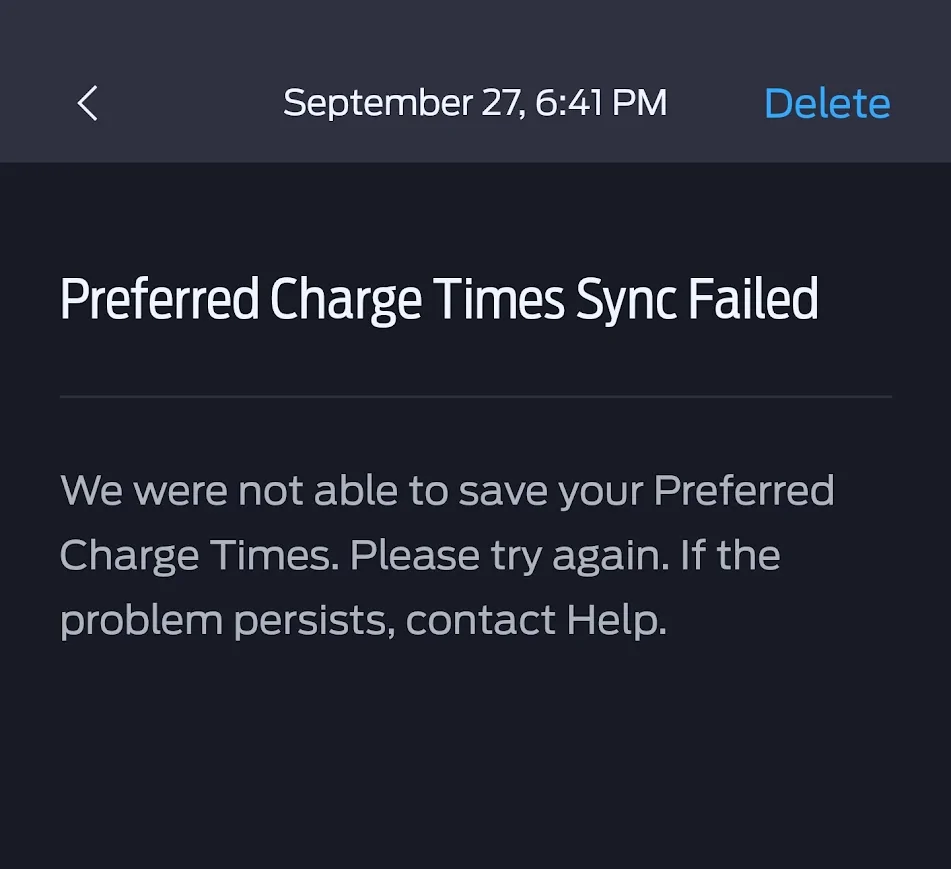
Then I look at the charging location and times, initial view was blank then seconds later the cloud to app sync concluded with the correct details:
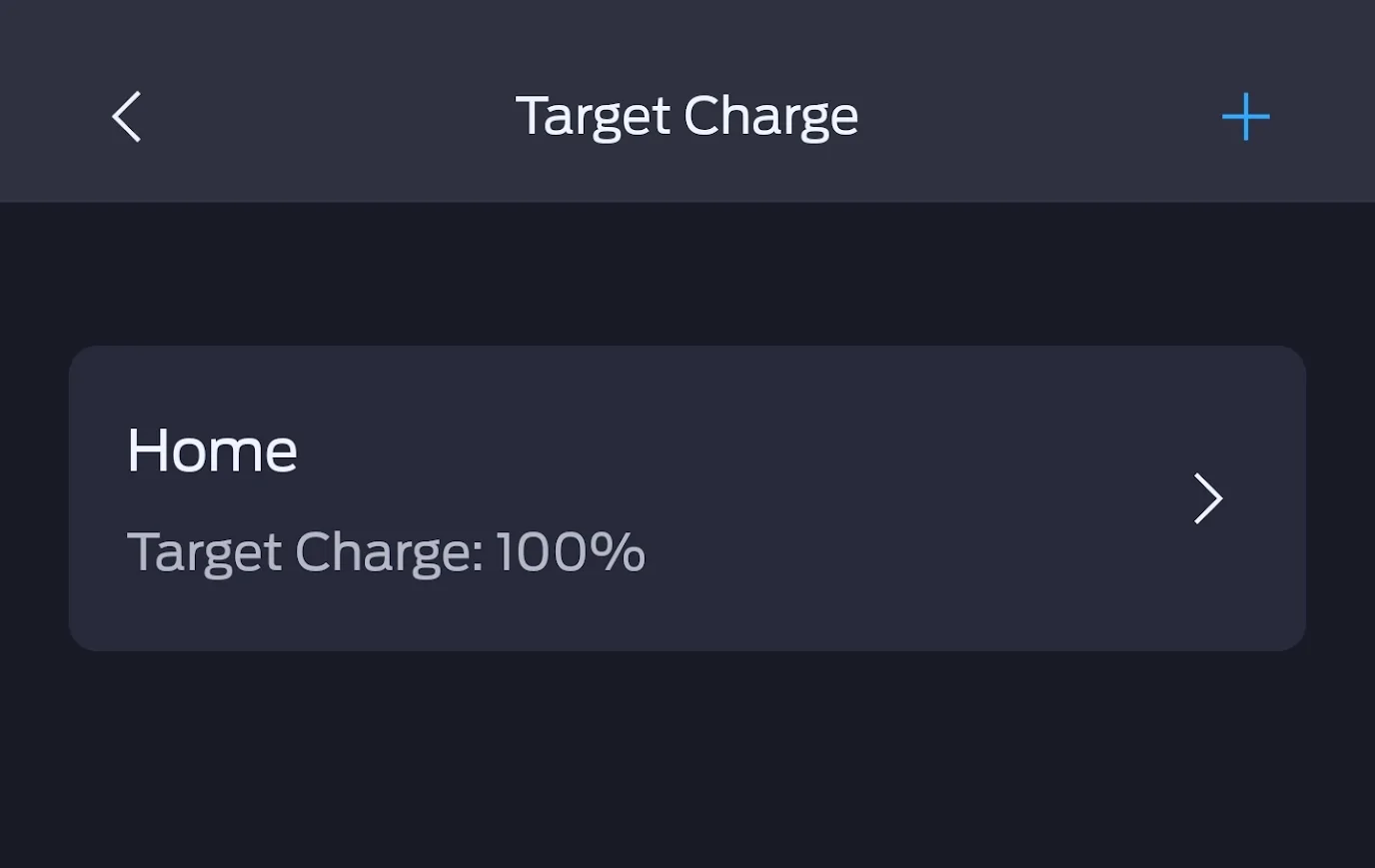
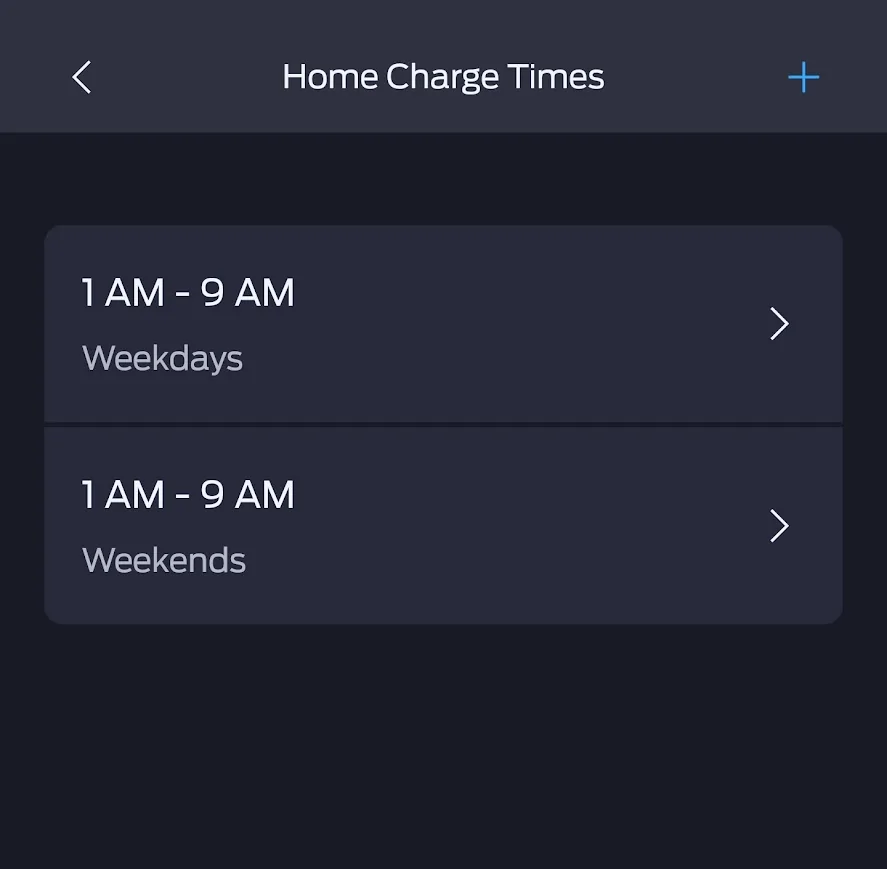
Sponsored
Possibly, just to confirm I like to do this periodically, my battery doesn't see extreme charging and discharging events very often, I'm curious from the car scanner data point of view if anything improves with SOH and cell variations. I'm chalking this up to science and personal proof vs. what Ai says.Just a note about charging to 100% for cell balancing. I do not believe charging the battery to 100% periodically is necessary for cell balancing with the Ford F-150 Lightnings, and deep discharging can have a negative effect on battery health.
I believe the Lightning uses active balancing and not passive balancing.
Last edited:
I think the servers are still having a bit of indigestion, I'm getting random notifications well after the failed attempts to make SOC and charging time adjustments.
Maybe the dust will settle with a good old Sunday master reset ?

Maybe the dust will settle with a good old Sunday master reset ?
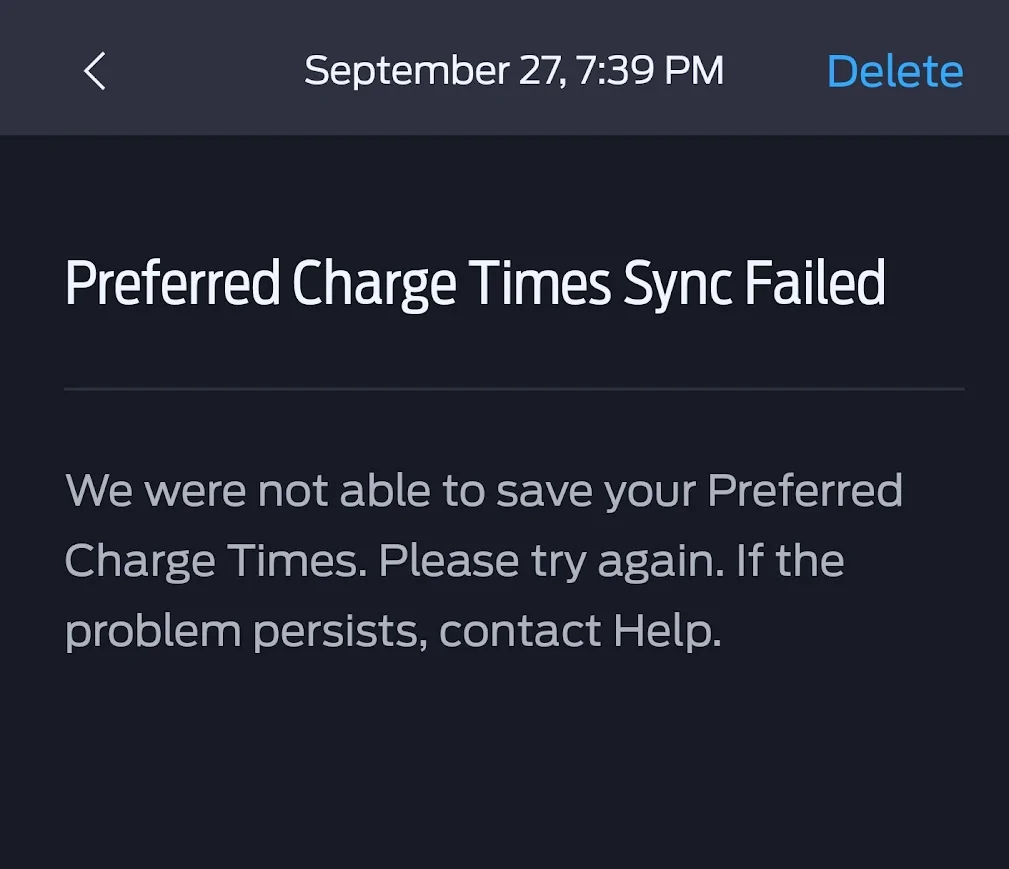
Checked the Fordpass app this morning, it was showing my target at 100%, but the time frames continued to show "anytime" instead of the prefered 1am to 9am [0100 to 0900].
Check the truck, Sync screen settings, they were still as set yesterday 100% and 1am to 9am [0100 to 0900]

Plugged in the FCSP and the dash showed that charging will commence early Monday morning at 0100 hrs.

Looked at the Fordpass after checking the truck now everything is in sync, why does it take having the truck "on" in 'accessory or ready' mode to get these system to talk to each other?

Check the truck, Sync screen settings, they were still as set yesterday 100% and 1am to 9am [0100 to 0900]
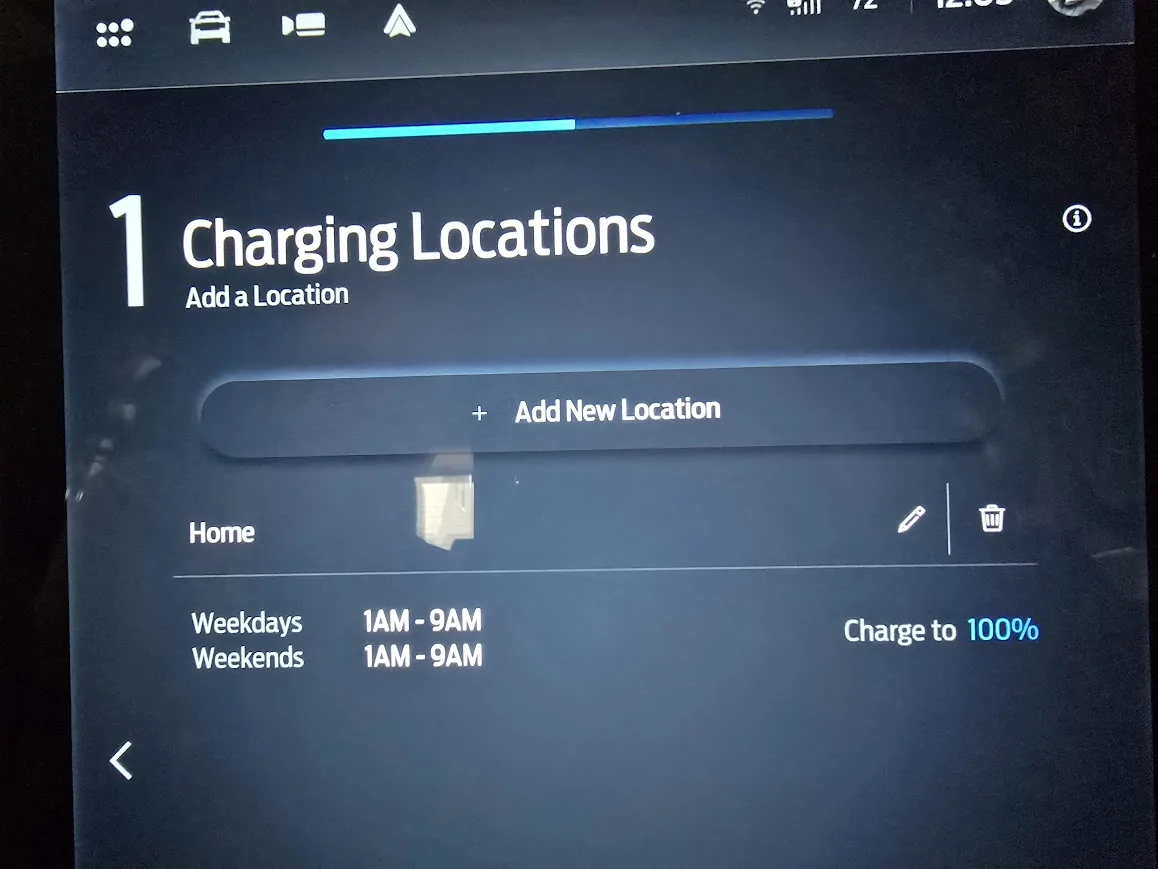
Plugged in the FCSP and the dash showed that charging will commence early Monday morning at 0100 hrs.
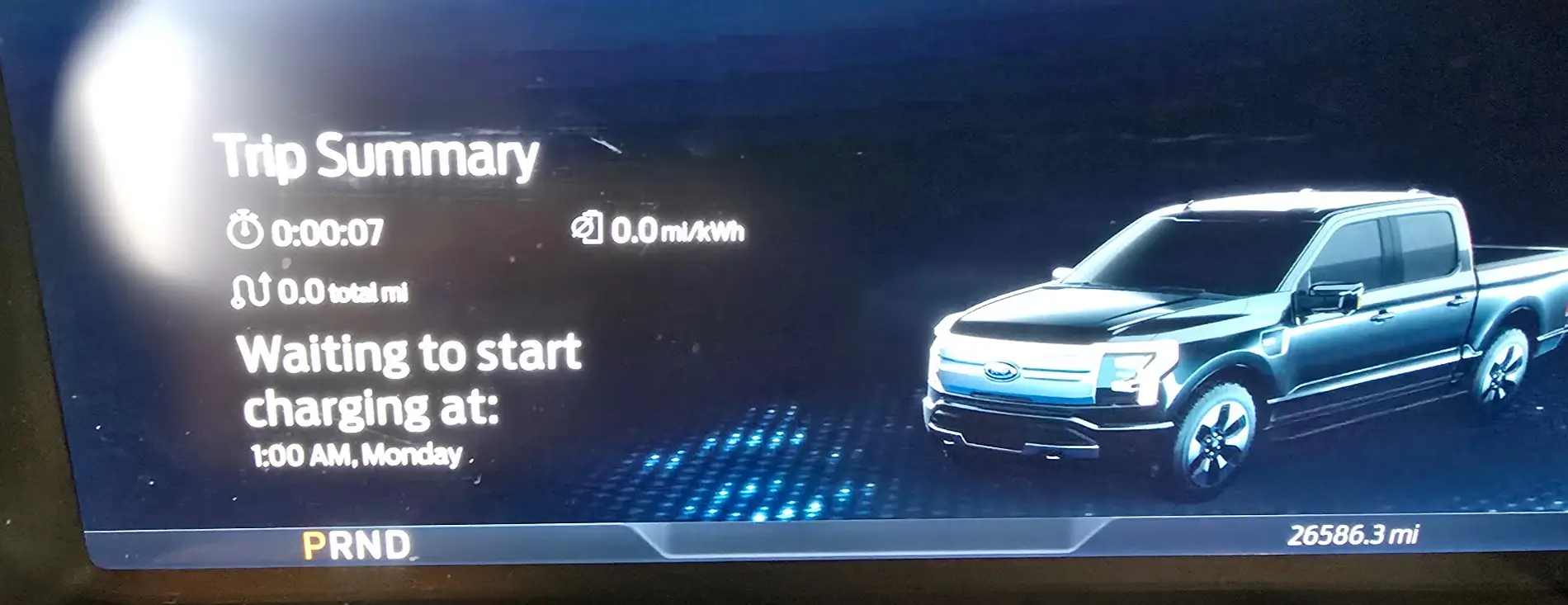
Looked at the Fordpass after checking the truck now everything is in sync, why does it take having the truck "on" in 'accessory or ready' mode to get these system to talk to each other?
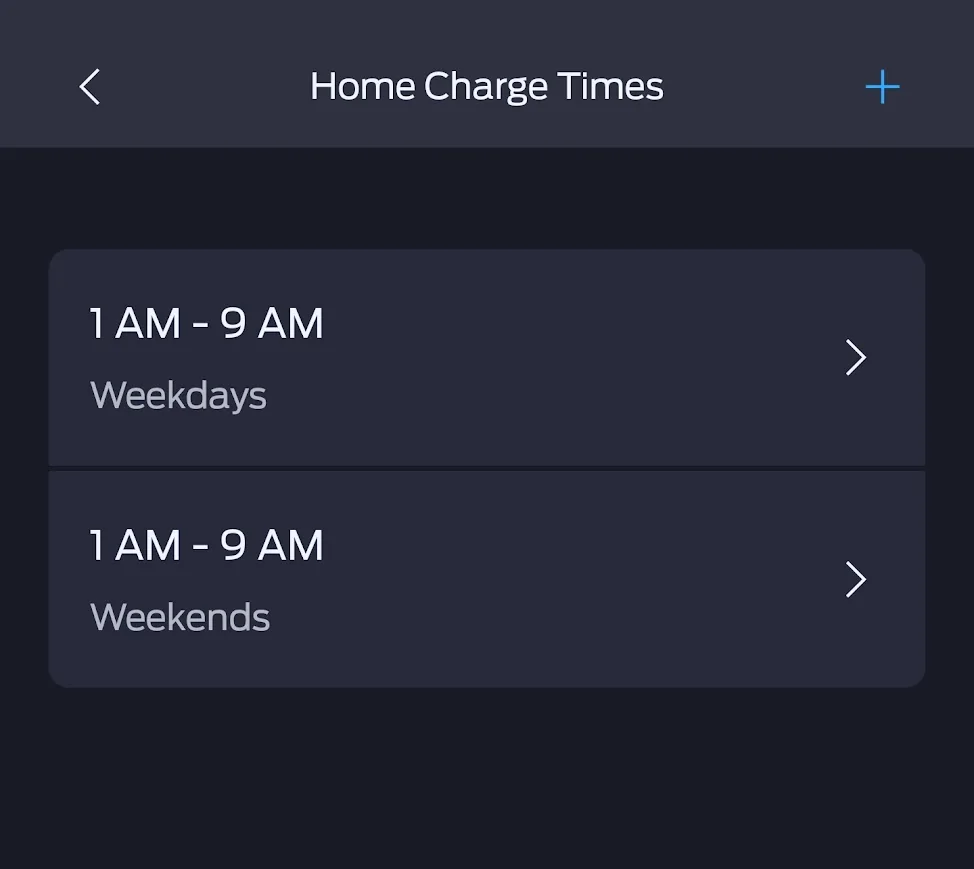
Kansan
Well-known member
One measurement that I’ve seen improve with a cycle of 100% - 0% is Variation in Capacity Between Battery Modules. When I took delivery of my Flash, with 110 miles on the odometer, the variation was 16.3 Ah. After my first deliberate 100-0% cycle the variation changed to 6 Ah. Next cycle the variation changed to 5.5 Ah. It’s now at 4.5 Ah. It only changes when I go through the full cycle with balancing time at each end. The process I use is to charge to 100% and let it sit at that state for 5-8 hours. Then discharge to as close to 0% as possible and let it sit at that state for 5-8 hours. Then I charge to 100% and go back to daily charging to 80%. I do this quarterly. I’m always close to home when I get to 0%.Just a note about charging to 100% for cell balancing. I do not believe charging the battery to 100% periodically is necessary for cell balancing with the Ford F-150 Lightnings, and deep discharging can have a negative effect on battery health.
I believe the Lightning uses active balancing and not passive balancing.
Passive balancing does involve periodically charging to 100% and then letting the cells with excess charge dissipate the excess charge via heat.
On the other hand, active balancing balances the cells during charging by transferring charge among cells, higher charged cells to lower charge cells, to get them all in balance during charging.
From Ford web site (the web site is about the 2025 Lightnings, but I believe the same applies to earlier model years):
-----
Adaptive Charging Protocols
The BMS continuously optimizes charging behavior:
- Adjusts charging rates based on battery temperature, state of charge, and cell health
- Implements cell balancing during charging to ensure uniform wear
- Varies maximum charge levels based on driving patterns and needs
- Adapts fast-charging profiles to minimize degradation
For frequent short-trip users, the system may limit maximum charge to 80-90% to extend battery life, while automatically enabling 100% charges before planned long journeys.
https://amford.com/blog/2025-ford-f-150-lightning-battery-options-for-performance/
-----
My Lightning owners manual says (in essence) to avoid charging to 100% except when absolutely needed such as when preparing for a long trip.
Therefore, I do not believe charging the battery to 100% periodically is necessary for cell balancing with the Ford F-150 Lightnings.
Another thing to consider - depth of discharge can be a significant factor in reducing or extending battery longevity - shallow charging is better for battery health.
"..Moving lithium ions from one side of the battery to the other is a physically taxing process, and is an opportunity for secondary reactions to occur. Studies have shown that the deeper a battery is discharged, the faster degradation will occur. The shuttling of the lithium in and out of the anode and cathode can cause mechanical stresses due to expansion and contraction. The cracking of the SEI layer can lead to additional lithium loss. The cracking of the anode and cathode can lead to disconnections in the battery mechanics, lost material, or higher resistance. The more aggressively and longer a battery is used, the more these stresses build. .."
https://www.recurrentauto.com/research/lessons-in-electric-car-battery-health
"...It has been fairly well studied in laboratory experiments that using lower depths of discharge can help preserve battery health, including lifetime, capacity, and power...."
https://www.recurrentauto.com/resea... it Matters.,to 95% or discharged down to 12%.
The newer LFP batteries seem to be less susceptible to the depth of discharge effects.
Another benefit of doing this is that I know my truck will reliably go to 0% SOC without prematurely shutting down.
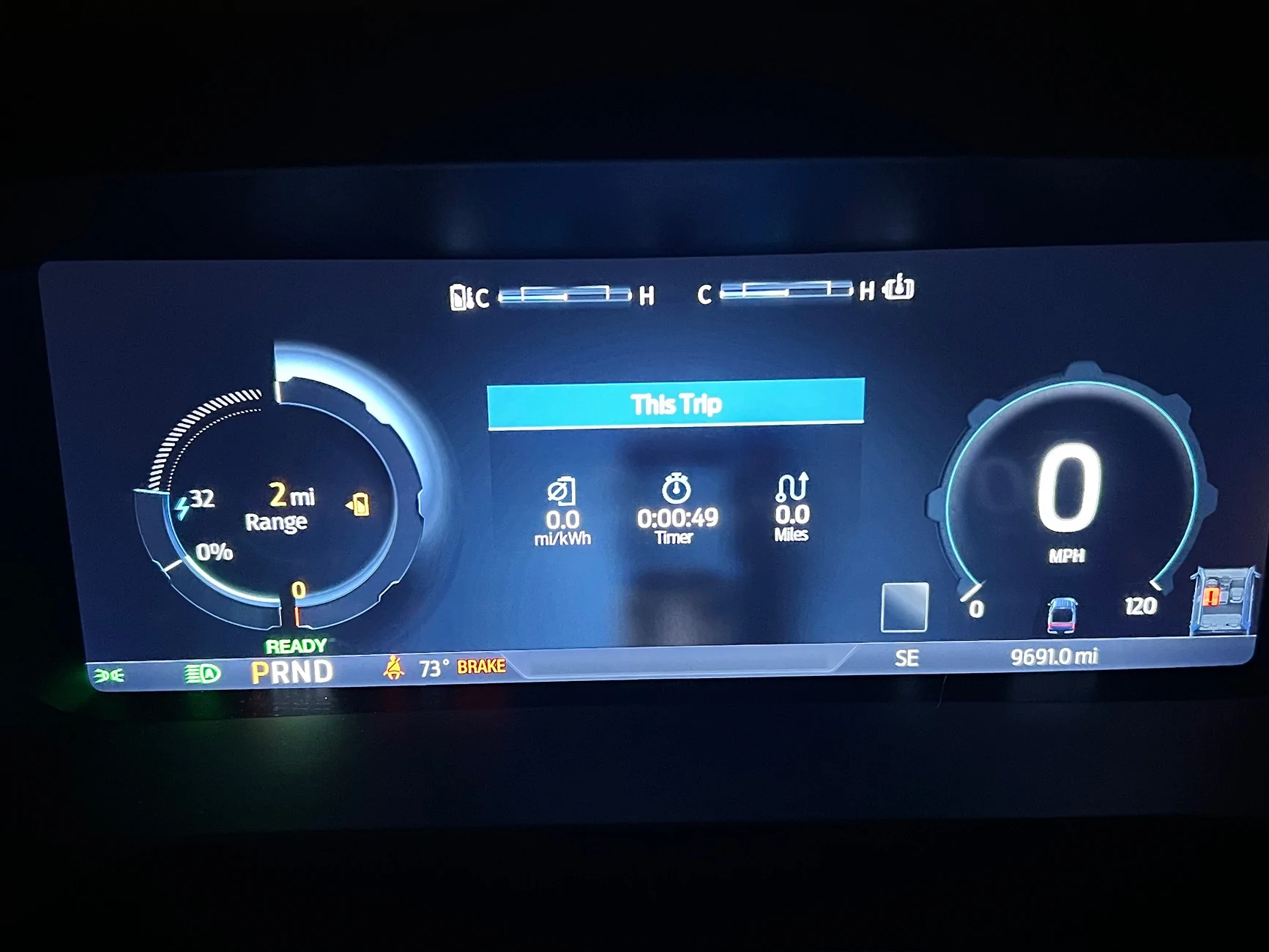
Charge event kicked off on time as set in the Sync screen at 1am.
The Fordpass active charging session record said it took 23 kWh I forgot to take a snapshot, after I unplugged the permanent record said 13 kWh, my Emporia showed 22.21 kWh, so the extra energy was partly the 9% loss for conversion and the rest for the balancing process.


The GOM shows 333 miles to empty

This was the charging curve, see the incremental tapering down of the flow of energy.



The FCSP data record was slow to post this morning, 22.173 kWh

The Fordpass active charging session record said it took 23 kWh I forgot to take a snapshot, after I unplugged the permanent record said 13 kWh, my Emporia showed 22.21 kWh, so the extra energy was partly the 9% loss for conversion and the rest for the balancing process.

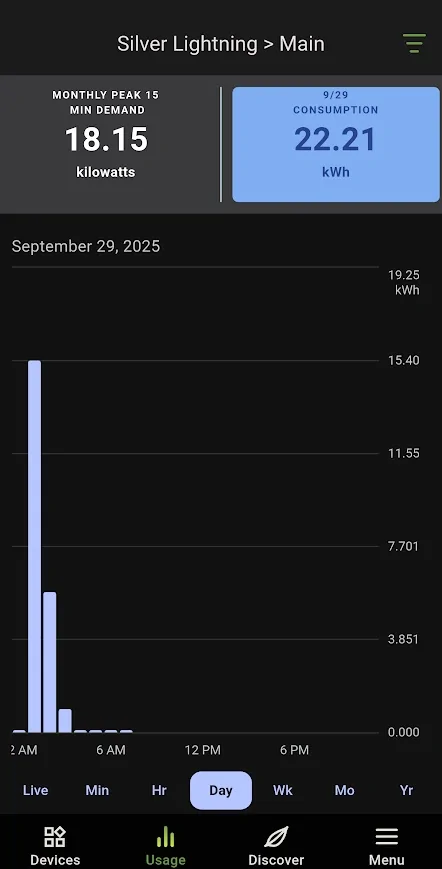
The GOM shows 333 miles to empty
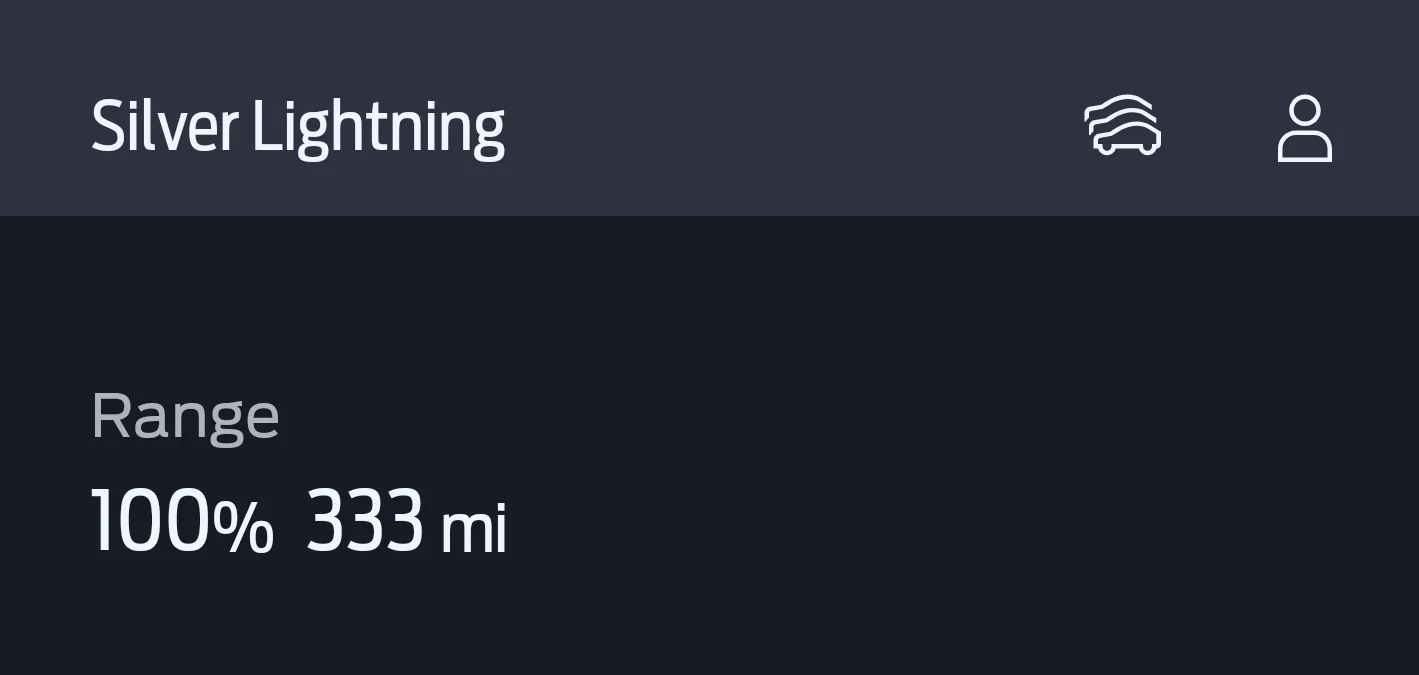
This was the charging curve, see the incremental tapering down of the flow of energy.

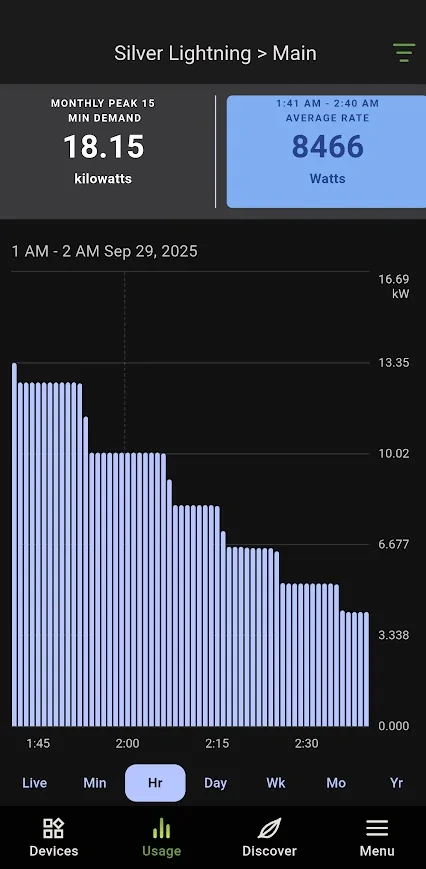
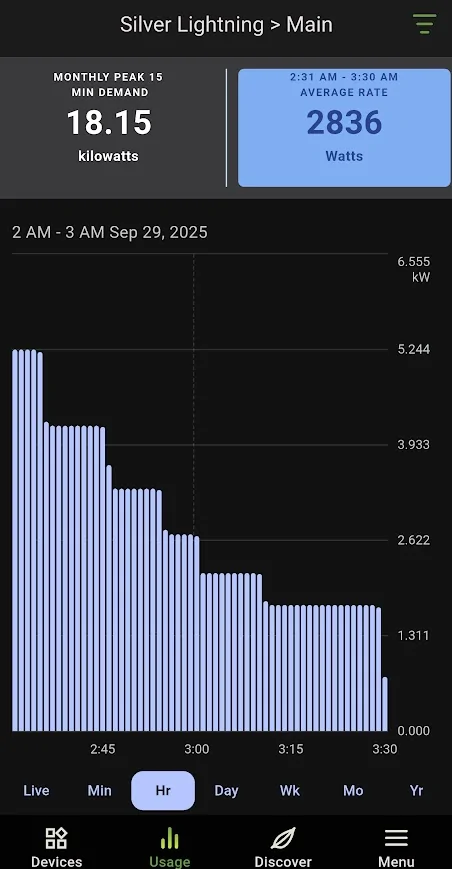
The FCSP data record was slow to post this morning, 22.173 kWh
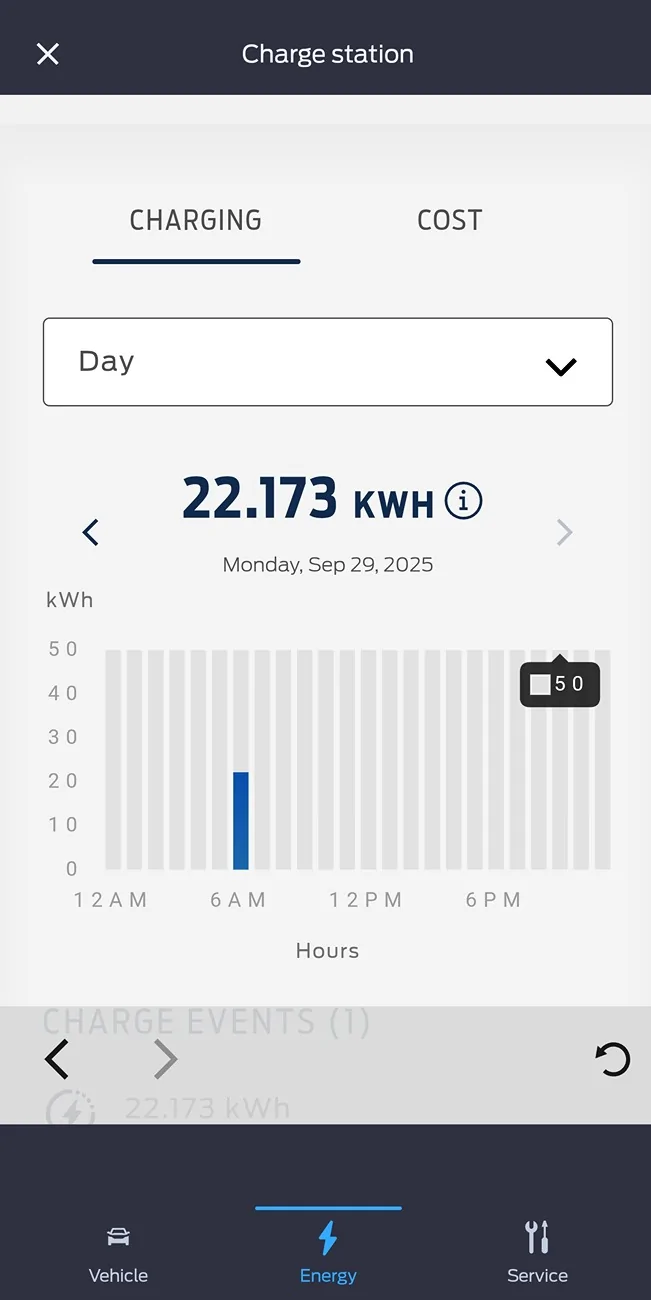
Sponsored
Similar threads
- Replies
- 10
- Views
- 9,037
- Replies
- 51
- Views
- 13,696
- Replies
- 20
- Views
- 7,565

